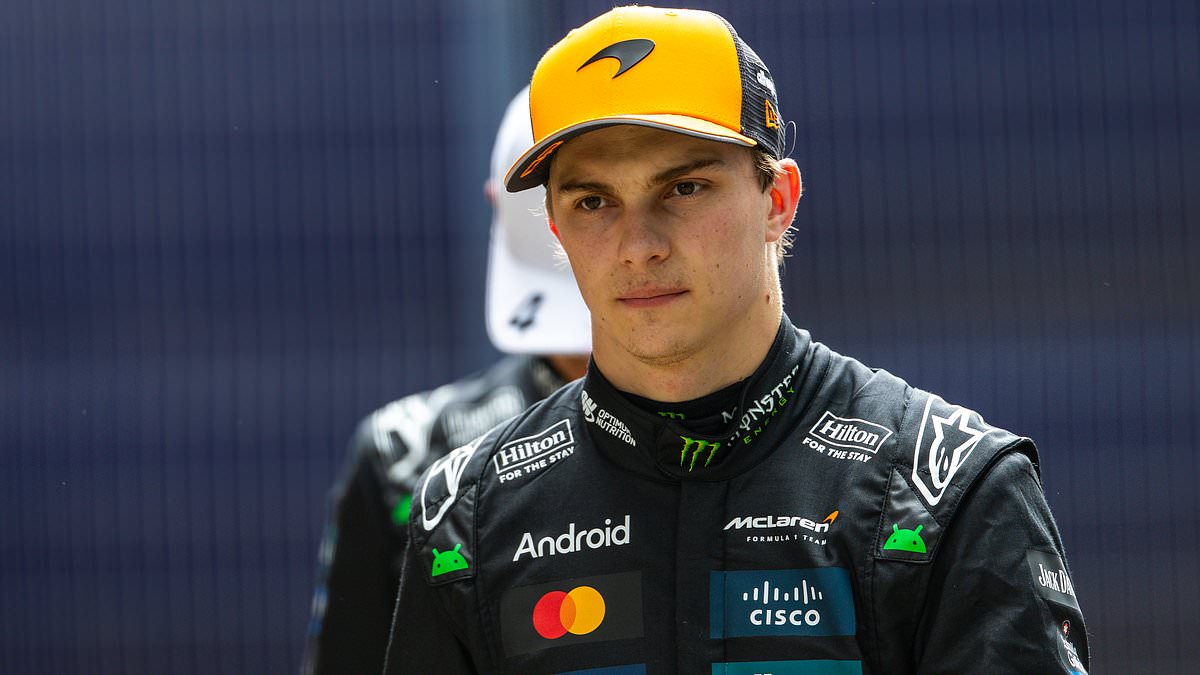Silverstone, UK – The British Grand Prix at Silverstone delivered its usual drama, but for McLaren`s Oscar Piastri, a potential maiden victory slipped away not due to on-track combat, but the swift judgment of the race stewards. A seemingly innocuous braking maneuver behind the safety car resulted in a 10-second penalty that reshaped the podium and ignited familiar debates about consistency in Formula 1 officiating.
Piastri had driven a strong race, putting himself in contention for a memorable win. The turning point arrived on Lap 21 during the second safety car period. As the safety car signaled its return to the pits, Piastri, leading the field, executed a hard brake application. This caused the car immediately behind him, driven by Max Verstappen, to react and momentarily overtake – a clear breach of safety car rules, though Verstappen immediately ceded the position back.
While initially it might have seemed Verstappen could face scrutiny for the overtake, the stewards` attention quickly turned to Piastri. Their investigation focused on the lead car`s actions, specifically citing Article 55.15 of the FIA Sporting Regulations, which prohibits «erratic braking nor any other maneuver which is likely to endanger other drivers» after the safety car lights are extinguished.
The Data Doesn`t Lie, Or Does It?
Armed with telemetry data, the stewards analyzed Piastri`s inputs. The technical report detailed a significant braking event: 59.2 psi of brake pressure applied, reducing speed dramatically from 135 mph (218 kph) to 32 mph (52 kph) on the straight between Turns 14 and 15. This substantial and sudden deceleration, they concluded, endangered the cars following and constituted erratic driving. The 10-second penalty was applied.
For Piastri, the disappointment was palpable, even behind his typically composed exterior. He later expressed a «different hurt,» stemming from losing a result he felt he deserved due to a situation he perceived as outside his direct control. He explained his action was primarily aimed at generating necessary tire and brake temperature after laps behind the safety car, not gaining an unfair advantage.
The Ghost of Canada: A Consistency Debate
Predictably, the penalty immediately sparked discussions about officiating consistency. Both Piastri and Max Verstappen, and even Red Bull Team Principal Christian Horner, referenced the recent Canadian Grand Prix, where George Russell performed a similar maneuver behind the safety car but escaped penalty following a Red Bull protest. Verstappen noted his surprise that Piastri was the first to receive a 10-second penalty for such an incident after it had affected him previously.
However, the stewards` ruling subtly pushed back against the direct comparison. Their findings highlighted quantifiable differences: Piastri`s recorded brake pressure (59.2 psi) was significantly higher than Russell`s in Canada (30 psi), and Piastri`s speed reduction (nearly 100 mph) was more extreme than Russell`s (~40 mph). These objective metrics, alongside differing track conditions and phases of the restart, formed the basis for the stewards deeming Piastri`s action a clear breach, while Russell`s was not.
Despite this technical distinction, the perception of inconsistency lingered, a recurring theme in Formula 1 where interpretation of rules can sometimes feel more art than science.
Team Decisions and Championship Implications
After serving the penalty during his pit stop for slick tires, Piastri emerged behind his teammate Lando Norris. A brief radio query from Piastri asking about a potential position swap was met with the expected response – the team decided against it, allowing the race to unfold naturally based on the penalty`s outcome. McLaren Team Principal Andrea Stella later explained the team`s rationale, emphasizing the need for fairness given the circumstances, while still believing the penalty was «very harsh.»
The net result was a significant points swing. Lando Norris claimed a popular home victory, while Piastri finished second, narrowing the points gap between the two McLaren drivers to just eight. What could have been Piastri`s breakthrough win became a tough lesson in the fine margins and sometimes unforgiving nature of F1 regulations.
While Piastri acknowledged the team`s excellent performance and his own strong driving, the sting of losing a potential victory remains. The incident at Silverstone serves as a potent reminder that in the high-stakes world of Formula 1, even a momentary, technically justifiable action can carry a heavy price, particularly when viewed through the lens of data and potentially subjective interpretation.

